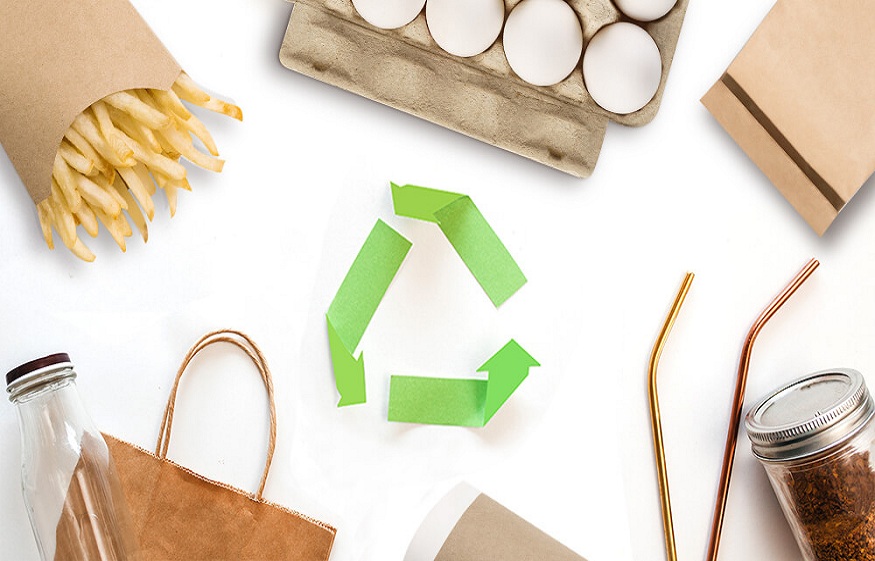Packaging appears as a significant factor, which has a determinant impact on preserving the quality and safety of products for the food industry in which the market is in continuous change and evolution. While selecting proper food packaging material, the decisions you make will have a great effect on the shelf-life, freshness, and visual presentation of the products.

1.Understanding the Significance of Food Packaging: IUnderstanding the Significance of Food Packaging:
Packaging has many purposes more than just the packaging of the food product. The shelf life of the food is of utmost importance, representing the taste and quality of what customers receive. In addition, packaging serves as a tool of information that consumers can use for details such as nutritional information, ingredients, and instructions. In addition, the design aesthetic and material attributes play an equally important role in the brand identity of the product and it shapes consumer perception and buying behavior.
2. Factors Influencing Food Packaging Material Selection: I Factors Influencing Food Packaging Material Selection:
- Product Type and Characteristics:
The nature of food products is the primary concern regarding the packaging material decision. Oxygen and moisture are some of the factors that degrade perishable goods. Hence, they require materials with enhanced barrier properties to protect them from these elements and therefore to prolong their shelf-life. Through careful selection of packaging options based on the product’s unique features, not only is it’s the shelf life that is preserved but also its quality the flavors are protected and nutritional content is maintained.
- Regulatory Compliance:
Necessary for food packaging materials selection are applying local and international regulations. Strict adherence to safety procedures and getting assent for coming into contact with food is necessary for safety. In addition to this, fulfillment of these regulatory requirements ensures the health and safety of consumers as well as means of protection for businesses from legal claims. The strict examination of the packaging materials ensures that they are free from harmful substances and contaminants, which consequently guarantees the customers of the reliability and safety of the packed food products.
- Environmental Impact:
Choose the materials to be able to recycle or be compostable not only in line with the current consumer preferences but also to create an eco-friendly image. Supporting these sustainable principles is a win-win approach as it not only caters to the rising preference for eco-friendly options but also enables business entities to be responsible stewards of the environment, and this in turn causes a positive sentiment and loyalty towards such businesses by the consumers who have adopted sustainable living.
3. Types of Food Packaging Materials: Types of Food Packaging Materials:
- Plastic Packaging:
Plastic is one of the most versatile, and commonly used, packaging materials that provide features such as clarity, flexibility, and toughness. Nevertheless, a thorough consideration of its environmental impact, as well as recyclability, is advisable. Striking the right balance between the beneficial functions of plastic and the necessary alternatives of sustainability is an important task while keeping in account the emerging consumers’ preferences and the target of reducing the eco-footprint related to plastic waste. The use of eco-friendly alternatives while also admitting the use of plastic shows the significance of choosing responsible for food packaging materials.
- Glass Packaging:
Due to their beauty and inertness, the glasses are great containers that can preserve the flavor and quality of food, particularly sauces, jams, and beverages. However, these factors can contribute to drawbacks such as bulkiness and weight during transportation, which increase the price of the goods and may lead to breakage while being handled and distributed.
- Metal Packaging:
Metals especially aluminum and tinplate are highly advantageous for their ability to provide excellent light, oxygen, and moisture protection. Generally, metal packaging, especially canning, used for canned goods lengthens the product shelf life by creating a tight shell or barrier that keeps the products intact against external factors, thereby protecting the freshness and quality of the packaged food products.
- Paper Packaging:
Paper products are widely used because of their eco-friendly value and are applied in different areas such as boxes, bags, and wraps. Many customers are increasingly in favor of paper packaging on the grounds of its biodegradability and recyclability and the market demand for sustainable solutions.
4. Assessing Barrier Properties:
- Oxygen Barrier:
many food products are susceptible to oxygen, and therefore they undergo oxidation and spoilage. The ability to select packaging materials with good oxygen barrier features does matter about keeping the quality of the product. The shield corresponds with the packaging and therefore that assurance of being impermeable to oxygen translates to sheltering the products from deterioration and preserving freshness thereby prolonging the shelf life.
- Moisture Barrier:
Moisture hurts some foods such as their texture. Hence, packaging materials with outstanding moisture barrier features are used for products that are susceptible to moisture adsorption. These substances form a protective barrier that seals the outer edges of the product and enables it to retain its appeal throughout its shelf life.
5. Cost Considerations:
Although the quality and safe food products should be kept as primary issues, the packaging materials prices should also be taken into account. Ensure that the materials are high quality but viable enough for sustainable business practices.
6. Customization and Branding:
packaging is a very powerful instrument in identity construction. Picking materials that promote individual and unique designs increases brand visibility and consumer attraction. In terms of aesthetics and function, it is crucial to strike a balance because both factors not only make the packaging attractive but also convey the brand’s values and its dedication to excellence.
7. Emerging Trends in Food Packaging Materials: Emerging Trends in Food Packaging Materials:
- Sustainable Innovations:
The field has seen green packaging solutions such as plant material, eatable packaging, and compostable options gaining momentum. Communicating with the changing trends helps a business to align with the customers’ changing preferences, thereby, showing that it is committed to environmental sustainability and meeting the call for green packaging solutions.
- Smart Packaging:
Attaching technology to packaging through the use of codes and temperature tags can boost consumer engagement which will also give consumers real-time information about your product. This is why the invention of these kinds of innovations is valuable to consumers on the market because they offer convenience, show openness to the consumers, and quality, and encourage an educated and interactive discussion.
8. Case Study: Bag Ecologique dans un Emballage de Vert Tea.
Green packaging like paper bags nowadays has managed to find some position and integrates with the rise of demand for environmentally friendly solutions perfectly. Brown paper, which is recyclable and biodegradable, has become a favorite choice of consumers who aspire to follow sustainable lifestyles.
In summary:
The securing of the best packaging materials for food is a complex task that considers such critical factors as the type of product, regulatory compliance, environmental compatibility, barrier functions, cost, customization, and competitive landscape. In recent years a great deal of attention has been paid to the fact that packaging materials harm the environment which caused companies to look for some eco-friendly variants. The German packers have also adopted paper bag brown packaging as an alternative method. The type of packaging material is vital in the process of solving environmental issues and providing an eco-friendly option, which is what the consumers demand. finally, these crucial issues will help the businesses to decide the safety and quality of the product that corresponds to the consumers’ current needs.





